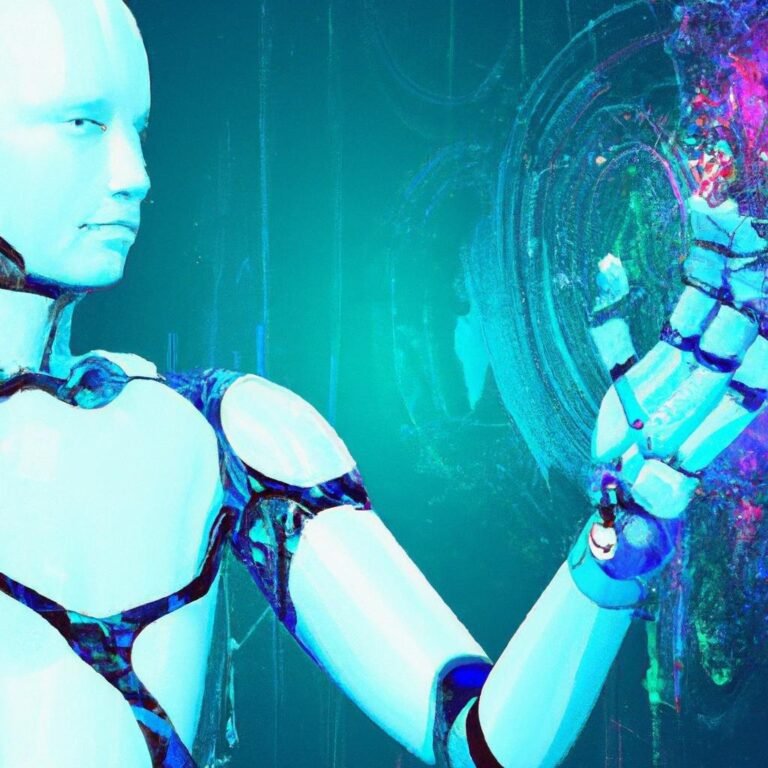In an era where technology continues to redefine the boundaries of possibility, the fusion of artificial intelligence (AI) and robotic prosthetics is revolutionizing the way we approach mobility and independence for individuals with limb loss. The journey from traditional prosthetics to advanced robotic solutions has transformed not only the mechanics of movement but also the emotional and social dynamics of those who rely on these devices. With AI’s ability to learn and adapt in real time, robotic prosthetics are evolving into intuitive extensions of the human body, allowing users to regain a sense of agency and normalcy in their daily lives. In this article, we delve into the groundbreaking advancements in AI-integrated prosthetics, exploring how these innovations are not just enhancing functionality, but also enriching the overall quality of life for users. Join us as we examine the intersection of technology and humanity, revealing the profound impact of intelligent design in prosthetic development and its potential to redefine futures.
Table of Contents
- Understanding the Role of AI in Modern Prosthetic Design
- Personalizing Prosthetics Through Machine Learning Algorithms
- Improving User Experience with Advanced Sensor Technologies
- Recommendations for Future Developments in Robotic Prosthetics
- To Conclude
Understanding the Role of AI in Modern Prosthetic Design
As artificial intelligence (AI) continues to advance, its integration into the field of prosthetics is reshaping the landscape of mobility and independence for individuals with limb loss. AI algorithms enable prosthetic devices to learn from the user’s movements and adapt accordingly, making them more intuitive and easier to use. This adaptation is achieved through techniques such as machine learning and sensor fusion, allowing prosthetics to respond to real-time feedback from the user’s body and environment. By analyzing data from various sensors, AI-driven prosthetics can predict and anticipate the user’s intentions, resulting in smoother and more coordinated movements.
The impact of AI in prosthetic design extends beyond motor functions; it also enhances the overall user experience. With the ability to customize settings based on individual preferences and activity levels, software-driven prosthetics are becoming more user-friendly. Key features include:
- Personalized Control: Users can set their prosthetics to respond differently during various activities, such as walking, running, or cycling.
- Real-time Adaptation: AI can adjust the prosthetic’s resistance or speed based on changes in terrain and movement.
- Data Tracking: Users can monitor their performance and make adjustments using mobile apps integrated with their prosthetic devices.
This transformative technology not only builds confidence in users but also opens up new avenues for rehabilitation and social engagement, making a significant difference in their daily lives.
Personalizing Prosthetics Through Machine Learning Algorithms
Machine learning algorithms have revolutionized the field of prosthetics, allowing for a level of personalization that was once thought impossible. By analyzing vast amounts of data from users, these algorithms can tailor prosthetics to better align with individual lifestyles and needs. This includes understanding a user’s gait, how they interact with their environment, and their specific preferences when it comes to movement and usability. As a result, prosthetics can now respond to subtle variations in muscle signals, allowing users to control their devices with unprecedented precision.
Among the most exciting innovations is the integration of natural language processing (NLP) and real-time feedback systems, which enable prosthetic limbs to learn from a user’s experiences over time. Some of the key benefits of these advancements include:
- Enhanced adaptability: Prosthetics that adjust movements based on user behavior.
- Increased comfort: Tailored fittings and designs based on individual limb shape and activity level.
- Improved functionality: Seamless transitions between different activities, whether walking, running, or climbing.
Below is a brief comparison of traditional prosthetics versus machine learning-enhanced prosthetics, showcasing the transformative impact of AI in this realm:
| Feature | Traditional Prosthetics | Machine Learning-Enhanced Prosthetics |
|---|---|---|
| Adjustability | Fixed settings | Dynamic adjustments |
| Feedback Mechanism | None | Real-time, adaptive feedback |
| User Learning | Static designs | Continually learns and evolves |
Improving User Experience with Advanced Sensor Technologies
In the realm of robotic prosthetics, integrating advanced sensor technologies has ushered in a new era of enhanced user experience. These sensors allow for real-time feedback on the user’s environment, empowering amputees to navigate their surroundings more intuitively. For instance, sensor arrays can detect obstacles, adjust grip strength, and even gauge surface textures, enabling a seamless interaction between the prosthetic limb and the world. The keen sensitivity of these sensors ensures that users can perform delicate tasks, such as holding a fragile item, with remarkable precision.
Moreover, the incorporation of machine learning algorithms with these sensors facilitates personalized adaptation over time. By analyzing data on the user’s movement patterns and preferences, the system can adjust its responses, leading to a truly bespoke experience. Key benefits of these technological advancements include:
- Increased adaptability to various environments
- Enhanced comfort during prolonged use
- Improved safety through automatic adjustments
This convergence of sensor technology and AI not only transforms the functionality of robotic prosthetics but also significantly enriches the daily lives of users, offering them a sense of autonomy and confidence that was once unattainable.
Recommendations for Future Developments in Robotic Prosthetics
To advance the future of robotic prosthetics, integrating machine learning algorithms will be crucial in enabling devices to adapt to the user’s unique movements and preferences. This customization can enhance the naturalness of limb motion, allowing wearers to feel more in control. Key areas for development include:
- Real-time feedback mechanisms that can adjust the prosthetic’s responsiveness based on activity.
- Improved sensor technology that can detect changes in the environment and modify movements accordingly.
- Enhanced user interfaces for easier operation, including voice commands and gesture control.
Collaboration between engineers, healthcare professionals, and users is essential in shaping the future landscape of prosthetics. Furthermore, the establishment of comprehensive rehabilitation programs that incorporate robotic limbs can significantly improve the integration experience. Consider the following collaborative strategies:
| Strategy | Description |
|---|---|
| User-Centric Design | Engage users throughout the development process to ensure needs are met. |
| Interdisciplinary Research | Combine insights from robotics, physiology, and psychology to innovate. |
| Continuous Support | Offer ongoing training and resources for users post-implementation. |
To Conclude
As we conclude our exploration of “,” it’s clear that the intersection of artificial intelligence and advanced technology is redefining the landscape of prosthetic solutions. The innovative strides being made in AI-powered robotic prosthetics not only offer improved functionality and adaptability but also empower individuals to reclaim independence and enhance their quality of life.
These advancements mark a significant step forward in understanding human mobility and interaction with technology. As researchers and engineers continue to push the boundaries of what’s possible, we can anticipate even more personalized and responsive solutions that cater to the unique needs of users.
It’s essential for stakeholders across various sectors—including healthcare, technology, and policy-making—to come together to support ongoing research and development in this exciting field. By fostering collaboration and investing in these technologies, we can ensure that the future of prosthetics is not only innovative but also inclusive.
In the coming years, as AI becomes further integrated into the realm of robotics, we will continue to witness transformative changes that not only enhance mechanical limbs but also the lives they touch. Let’s stay engaged, informed, and supportive of these advancements that have the profound potential to empower individuals and inspire hope. Thank you for joining us on this journey into the future of prosthetics.





